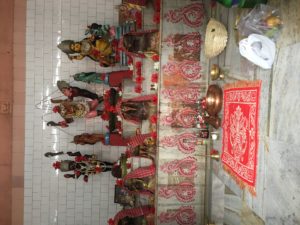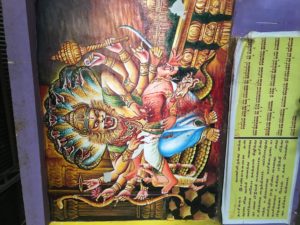Apparently, similar reformations have taken place in many traditions of India and South-East Asia over the last 150 years, mostly related to the marginalisation of the most esoteric practices. In many ways, this trend was influenced by the realities of colonization. From talking to the bearers of the Southern tradition of Siddhars, I learned that it was initially a very independent tradition. But for a time, when certain rulers came, they tried to bring as many people as possible to their faith. Sometimes this took violent forms, so the Siddhars merged with Śaivism, then with Vaishnavism, etc. And now, despite the fact that they are quite independent, there is a fusion of Shaivite elements in their practices, for example, in such practices as Vāsi-yoga (வாசி யோகம்), sometimes Śakta elements, or the mention of Śrī-yantra by Tirumūlar, Bhogar, etc. And it was also unexpected for me to learn, although familiar, that they influenced the Śramaṇic traditions, such as the Ājīvikas, Jains, early Buddhism. Apparently, in the South it was a tradition of yoga masters who led a solitary life, to whom people came for blessings, sometimes instructions, which exists to this day. This is very similar to how it is in the Northern Nāth Tradition, many Siddha-purushas, such as Gorakṣanāth (Gorakkar – கோரக்கர் in the south), Matsyendranāth (Maсchamuni மச்சமுனி – in the south), etc., they are actually the same gurus. Of course, in the south they have their own versions of their stories, but in many ways they coincide with the northern versions.
Not long ago I reread Dr. Kate Crosby’s research on Esoteric Theravada, specifically the tradition of “borān kammaṭṭhāna“, which can be translated as “ancient place for doing” (performing spiritual practice). The name itself is very reminiscent of the Tamil āśivagam (ஆசீவகம் –– place for spiritual practice), it can be both a place for sādhana and the body of the practitioner. This researcher describes in great detail how, under the influence of colonial factors, over the course of a little less than a couple of centuries, this traditional practice of Buddhism was replaced by the cultivation of intellectualism, etc. Although there was a deep connection with medicine, oriented towards Ayurveda. Also, in the process of practice given by the master, the student experiences signs of nimitta, in the form of some pure states of consciousness. After which, through the energy channels in the nostrils, they are inhaled into the embryo of Buddha, which the practitioner forms in his body, in the womb area (garbha). Thus, similar to how in Taoist practices the practitioner grows the embryo of immortality “ling tai” in the area of dāntián, in the same way in this tradition the practitioner grows Buddha in himself. The Siddhars have the same thing with the practices of internal alchemy, with the union of the seed of Śiva and rajas of Śakti, Śiva-svarūpa is reborn inside the practitioner’s body. The lower center in the area of the “kanda” is considered as a crucible alchemical furnace, perhaps the names of some haṭha-yoga practices, such as bhastrikā-prāṇāyāma (bellows prāṇāyāma) and others are symbolically connected. Abhinavagupta in the Tantrāloka called this internal birth “yoginībhū“. The Akulavīratantra, attributed to Mahāsiddha Matsyendranāth, begins with the following verse:
श्रीमच्छन्दपादकेभ्यो नमः ।
श्रीमीनसहजनन्दं स्वकीयाङ्गसमुद्भवम् ।
सर्वमाधारगम्भीरमचलं व्यपकं परम् ।
Salutations to the feet of Śrī Macchanda!
[Bow to] Śrī Mīna [nāth], the sahajānanda, born from his own body, the Whole, the Deepest Root, the Immovable, the All-pervading, the Supreme!
That is, Matsyendranāth, through his inner birth and spiritual growth, realised his new spiritual body, through which he influenced the physical one. We can say the same about Gorakṣanāth and many other Mahāsiddhas. And when we speak of “sahaja bliss”, the term “sahaja” can mean that which is born (i.e. with the body). Something spiritual is revealed inside the body, and then, together with the body, psychophysical transformations occur.
And here is how Siddhar Bogar from the tradition of South Indian siddhas speaks about it:
கருவென்ன சையோகங் காமவித்தை
காணார்க ளூலகக்திற் கன்மபொகி
உருவென்ன கால்வேளை யுணரும்போது
ஓங்காரம் நின்றிடத்தே வித்னத்ப்பாச்க
வருவென்ன வாவென்று வாங்கிக்கொண்டு
வாய்பேசா மூலத்தே மனதைவத்து
கருவெண்ன் நீயென்ன மிரண்டுமொன்று
தடையாறவே கேட்டதெல்லாந் தருகுந்தானே
“The creation of the embryo, called kāya-yoga, is the art of controlling the seed;
Worldly people do not understand the masters who have mastered the art of action,
who contemplate the said embryo of form with the duration of breathing.
In that place, where the eternal AUM sounds sublimate the vital force (seed),
performing [for this] a pulsating breath directed upward;
And, remaining in silence, concentrate your mind on the mūla-mantra.
The embryo is you and you both are one; all barriers will disappear at their core and
what is destined will be granted”…
Although, we encounter similar principles not only in the mentioned traditions, but, to one degree or another, in others. For example, in Vedism, the first sacred cord is considered to be the umbilical cord, which connects the fetus with the mother. This is the first birth, and the second is a spiritual birth, when you are physically separated from your mother and the sacred cord is given to you. The Goddess Sāvitrī becomes your Mother, you receive her mantra, which has the gāyatrī metric size.
In Śrī Vidyā we find a similar transmission, first in the form of the mantra of the young eight-year-old Goddess Bālā. Then she “grows” (the power of the awakening Kuṇḍalini Śakti grows), she becomes fifteen years old with the blossoming power of Kāma (Kāmeśvarī), known as Pañcadaśī. Then, she becomes Mahāṣoḍaśī. Guru ji Rameshchandra Sharma told me that once the syllables of Pañcadaśī were alchemical formulas, but at the moment few people deeply understand their meaning.
The well-known Śivasaṃhitā prescribes contemplation of the bījas, the mantras of Tripurasundarī in the area of the three granthis with the purpose of passing Kuṇḍalini through them. In the area of mūlādhāra–bīja (ऐं aiṃ), as the Newari Guru ji Kedarraj Rajapadhyaya explained to me earlier, there she is represented in the form of Kubjikā (a coiled Goddess), many know her as Kulakuṇḍalinī. Further, in the anāhata region, it is Kāmeśvarī in the form of Kāma-bīja (क्लीं klīṃ) and in the rudra-granthi region – Śakti-bīja (सौः sauḥ) (Parā-bīja in Kashmir Śaivism).
The Śrī Vidyā texts give a more “mature version” of this mantra in the form of Pañcadaśī, also distributing its three kūṭas (accumulations of bījas) to the same areas. Thus, we get the first bliss of vag-bhāva in the manifestation of speech on the physical level. Further, bliss (paramānanda) revealed in the form of different forms of kāma with the overcoming of the boundaries between subject and object. The bliss of renunciation, in the form of the power of renunciation (viramānanda), when we overcome the constant tendencies to get stuck in the phenomena of prapañca. And ultimately we realise the innate bliss of sahajānanda, which is symbolised by Mahāṣoḍaśī in Śrī Vidyā sādhana. You realise the essence of Śūnyatā and Pūrṇatā.
It seems that many yogic and tantric practices have been curtailed and greatly simplified, sometimes modified to serve completely opposite purposes. During the colonial period, for example, the British considered yogis and tantrikas to be very dangerous elements wandering around India, not amenable to conversion to puritanical Christianity. But when Western researchers themselves began to study Sanskrit and texts that contained many “wild elements,” the Indians themselves began to create a “good kind of Indian spirituality” for Westerners. Around the same time, we see the emergence of many modern yoga schools in India, some new forms of the “Kṛṣṇa consciousness movement” and the study of tantra by a variety of European researchers. We see how the esoteric forms of Theravada are beginning to be supplanted by those that divide the psyche and somatics, giving preference to the former. This is all very similar to how it exists in the Abrahamic cults. Of course, you can also find esoteric traditions such as Sufism, Kabbalah, Hesychasm and others, less known, however, Christian preachers mainly carried an extremely dualistic approach.
I think that these important historical factors should be known, not to underestimate their influence, in order to fully understand many methods of yoga and tantra. Only in a full-fledged form can they be an effective psychophysical transformation. Of course, someone will say that he is not interested in politics, but only in spiritual practice. However, you could see in the above-mentioned examples how politics can influence various spiritual institutions and reformat them. In my opinion, it is important to know these factors and those modern influences to which people are generally exposed now.


